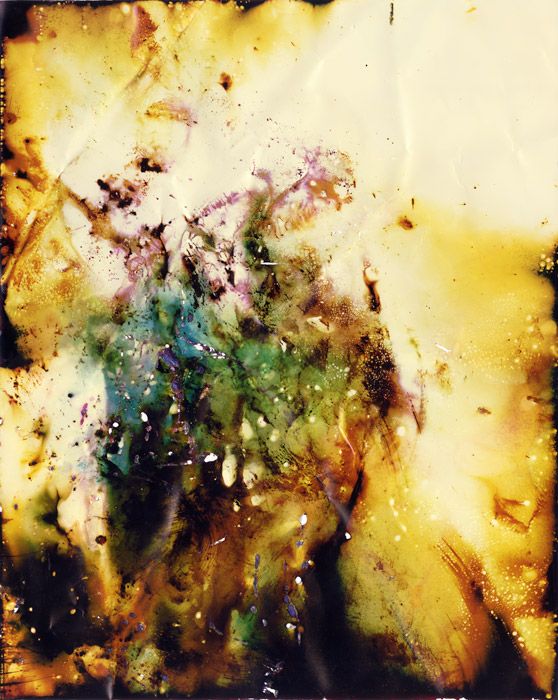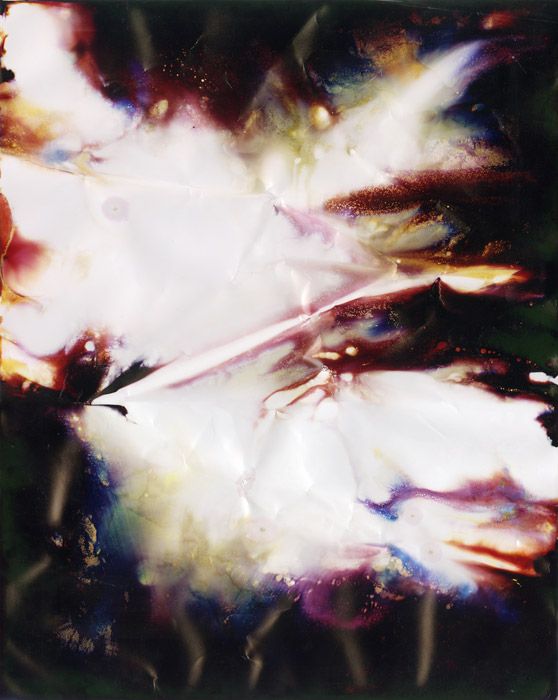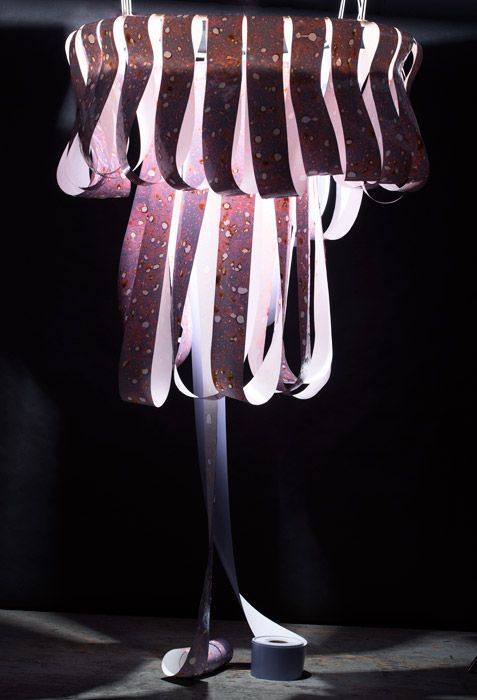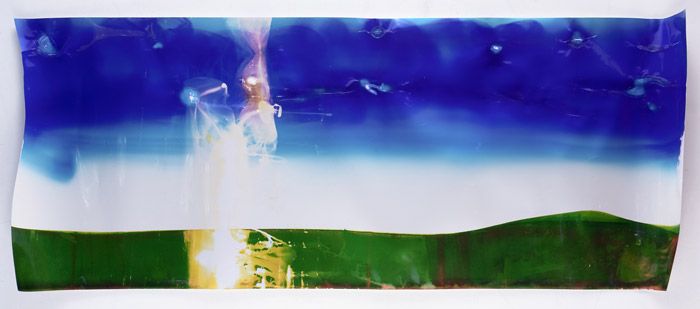blog
Interview with artist Kristen Kula

Untitled, 2014
F-Stop Magazine: How did you first become involved in photography and what led to you working in this medium as an artist?
Kristin Kula: I have always been an artistic person. My parents, although not practicing artists, have backgrounds in photography and painting. They have always been very supportive of my passions. At eight years old, I won $100 in a fishing competition, and when my parents asked what I wanted to get with it, I chose to buy my first camera.
I continued my artistic practice exploring every medium, but always fell back on photography and photographic collage. A little bit of me is a mathematics and science nerd, so working with cameras and experimenting in the darkroom has always been intriguing. I still use multiple mediums in my artistic practice, but photography always seems to become part of it or informs what I create.
F-Stop: How did the project “Unphotograph” come about?
KK: Unphotograph started in 2012 when I was still attending Columbia College Chicago as an undergrad in the Photography department. I was at a crossroads in my practice. Having attending the program for three years, I had nearly exhausted my passion for photography. What I needed was to put my cameras down for a moment to examine what it was about photographic processes that lured me in from the start.
In a course entitled Constructed Image, I decided I was not going to take a single photograph, and that is where the challenge began. The specific assignment that pushed me into this project was one that specifically stated “photograph an object in five different ways.” Up to that point, I had used performance and found photographs and magazines to fulfill explore different ways of photographing a subject. Having to “photograph” something was never a requirement.
To get around “photographing” with a camera, I went to the color darkroom and explored varying states of water; ice, cold water, room temperature water, boiling water, and steam. Starting with ice onward, I did multiple iterations of photograms and examined the differences the temperature had on the material. I knew that once I applied heat, I would see a jump in appearance in the c-print. The first print I boiled, I used the safelight along with the hot water. The result was a green bubbly photograph blended with the cyan fogging from the safelight. After that, I boiled an unexposed sheet of chromogenic paper in complete darkness, processed it, and out came my first Unphotograph print; a green and white wrinkled piece of paper.

Untitled, 2014
F-Stop: Can you discuss your process for making these images?
KK: My process is mad-scientist-meets-photographer-meets-painter. The driving force behind the way my process has evolved is knowing that analog photographic materials are not only light sensitive, but are also sensitive to heat and chemicals. The process varies piece to piece. There are periods of time that I find myself using a specific set of predetermined rules to creating the pieces and other times when I let go of all rules and let the results surprise me.
Essentially, the process examines the characteristics of chromogenic paper using boiling hot water, irons, a heat gun, and bleach. These are the basic steps I use when creating, but I have also used xylene, acetone, and other solvents to pry into the material. The first year of making these works, I limited myself by making every piece in absence of light and considered them complete once processed. I have since added the use of a heat gun, which emits a small amount of light. I also make manyunprocessed pieces, so that the objectsare forever changing and shifting tones as they are on display.

Scrap, 2013
F-Stop: Some of the images look like they are photographs of objects you have created, can you talk about these (how you made them, what they are)?
KK: Every piece in Unphotograph is a unique photographic object. Some, however, are definitely more sculptural. The first piece that was more sculptural is Scrap (2013). This piece is made from a boiled, bleached, and processed sheet of metallic Kodak chromogenic paper that was probably 20 inches by 7 feet. I was upset by how the print turned out, so I went to roll it up and forget about it all together. Seeing the print rolled was an entirely different experience; I began to love it. After playing with the nearly discarded material, I found a form that worked for the piece better than it could ever have looked flat. I put it back in the crock-pot and boiled the piece till the emulsion stuck together acting as a self-sufficient adhesive.
Since then, I found myself using roll paper more frequently. This opened up the potential for the size to be increased greatly and I realized how I could utilize the material in three dimensions. My most recent piece, Paper Chandelier (2014), uses an entire roll of 5 in x 577 ft Kodak chromogenic paper. Through burning the paper’s emulsion with a heat gun, the surface boils and chars. This repetitive marks on the paper starts at the beginning of the roll of paper curling on the floor and goes on for the length of the two tiers of the chandelier, ending just past the light source in the middle. The base is the meeting of the untouched roll and the spiraling burnt beginnings of the chandelier. It is as if the roll of paper is feeding up to the light and burning the emulsion then swooping into the chandelier tiers.
Chromogenic roll paper to me signifies a commodity once valued in consumer photographic printing at drugstores and other mass photo printing hubs. This paper is now out of production and selling for a fraction of the original cost on ebay. All of these rolls will likely never become photographs and will sit on the shelf to expire and be thrown out if they have not already. Through pieces like Paper Chandelier, I bring new life to the material, allowing it to exist and be seen.
F-Stop: What do you want people to experience or think about when they look at these photographs?
KK: When people see this work, I am always fascinated to hear the many reactions, especially between the photography community and art & design community. Some people go straight into describing what they see within the colors because they want it to be an image of something. Others try to argue what medium the work falls into. A response I particularly enjoy and think about a lot as I move forward is about how the work is “violently beautiful.” Between the burns, bubbling emulsion, wrinkles and creases, the paper is saturated in brilliant colors that are aesthetically pleasing. This juxtaposition of violence and beauty fascinates me, and I hope there are others who see this in the work.

Paper Chandelier, 2014
F-Stop: Do you have a favorite image in the series? If so, which one and why is it the image that stands out to you most?
KK: At the moment, my favorite is Paper Chandelier. When viewed in person, this piece allows the viewer to walk around it entirely, to look closely and discover it’s intricate detail. Upon closer examination, the backside of the paper is also visible, revealing the actual material, allowing the viewer to more fully understand how the piece is created. I love many of my earlier works, but I am excited to work more sculpturally and in a larger scale.
F-Stop: Are you working on any other projects currently?
KK: Many of my projects are ongoing. I am excited to get back in the darkroom after a five-month hiatus to work on new pieces for Unphotograph. I am also working on previous series of works I have done deconstructing print materials like magazines, books, and newspapers to look at ideas of mass produced commodities that are now digitally digested. Beyond the art that I create, I am also working on projects with a couple collaborative groups and working towards my next curatorial endeavor.

Attempt at a Landscape, 2013
F-Stop: What photographers or other artists inspire you?
KK: There are manyartists I look to for inspiration. Artists that have influenced me once I started working on Unphotograph in particular include; Pierre Cordier, Curtis Mann, Walead Beshty, Liz Deschenes, Marco Breuer, Mariah Robertson, Yves Klein, Robert Rauschenberg, and Lucio Fontana.
I am always finding new work that I am instantly drawn to. During EXPO Chicago 2014, I saw a piece by Richard Galpin that definitely made me stop and silenced me while I gazed at the remarkable piece.
To see more of Kristen Kula’s work: www.kristen-kula.com
Location: Online Type: Featured Photographer, Interview
Events by Location
Post Categories
Tags
- Abstract
- Alternative process
- Architecture
- Archives
- Artist residency
- Artist Talk
- Biennial
- Black and White
- Book Fair
- Car culture
- Charity
- Childhood
- Children
- Cities
- Collaboration
- Community
- Cyanotype
- Documentary
- Environment
- Event
- Exhibition
- Faith
- Family
- Fashion
- Festival
- Film Review
- Food
- Friendship
- FStop20th
- Gender
- Gun Culture
- Habitat
- home
- journal
- Landscapes
- Lecture
- Love
- Masculinity
- Mental Health
- Migration
- Museums
- Music
- Nature
- Night
- nuclear
- Photomontage
- Plants
- Podcast
- Portraits
- Prairies
- Religion
- River
- Still Life
- Street Photography
- Tourism
- UFO
- Water
- Zine

Leave a Reply